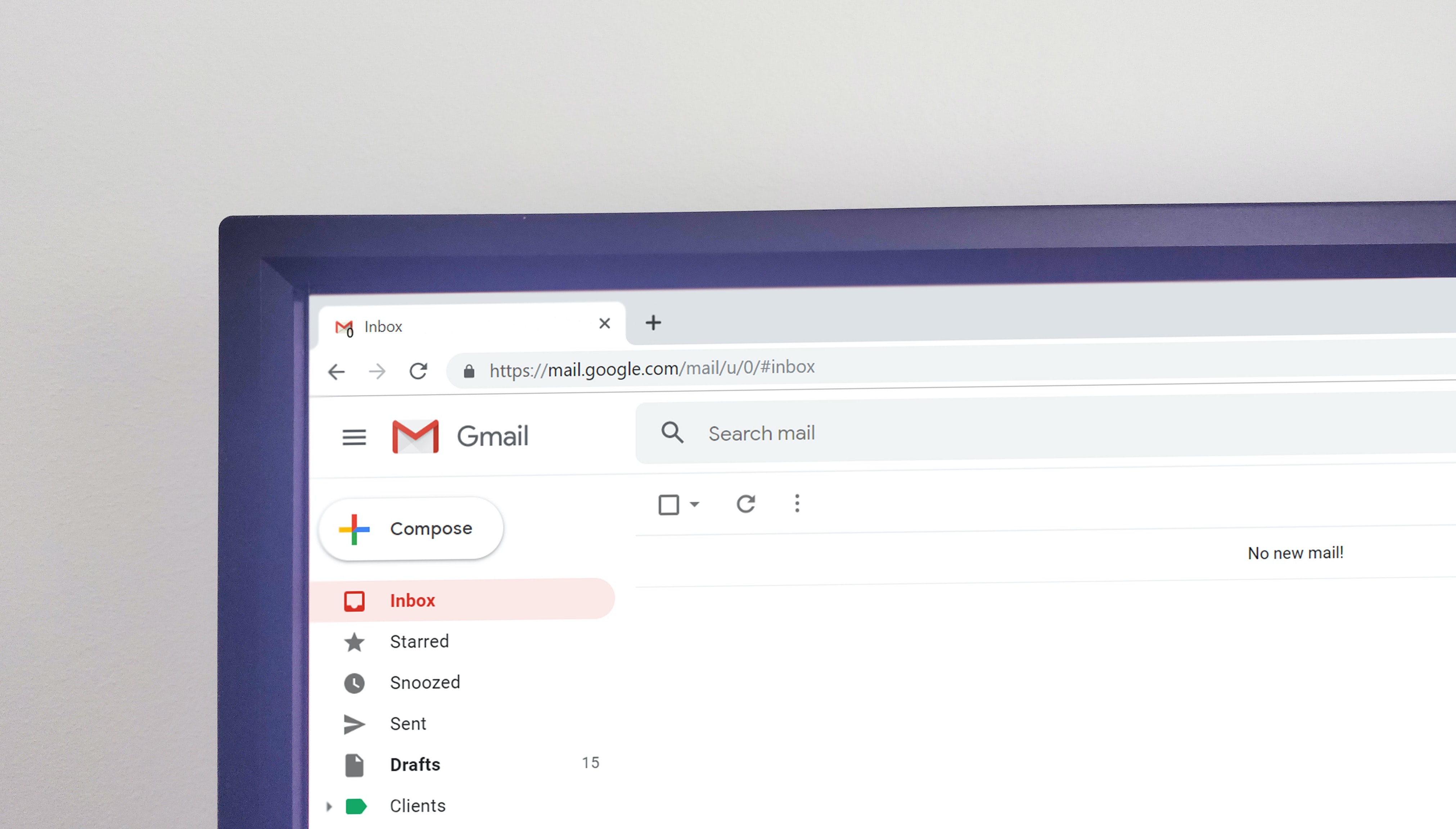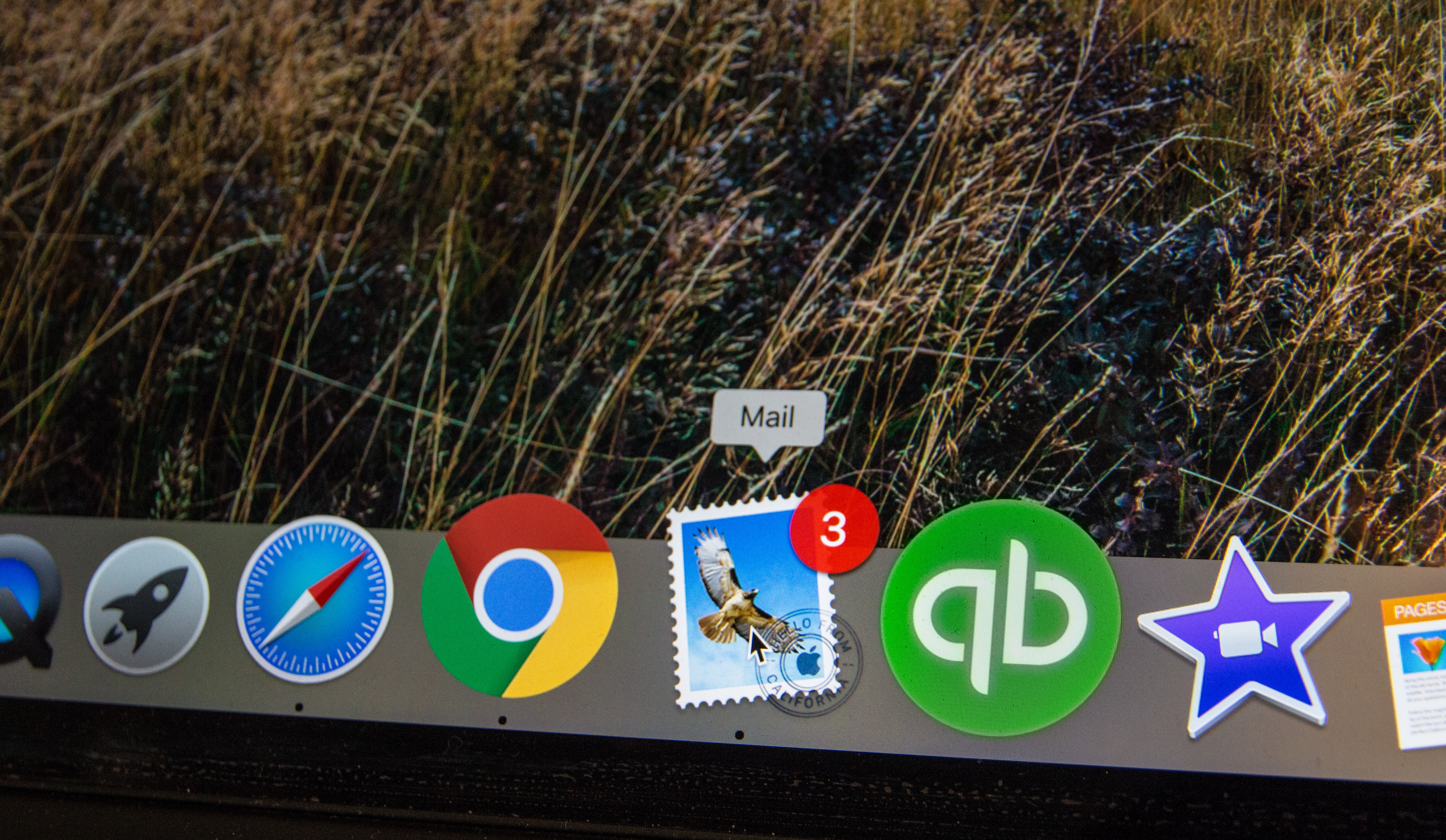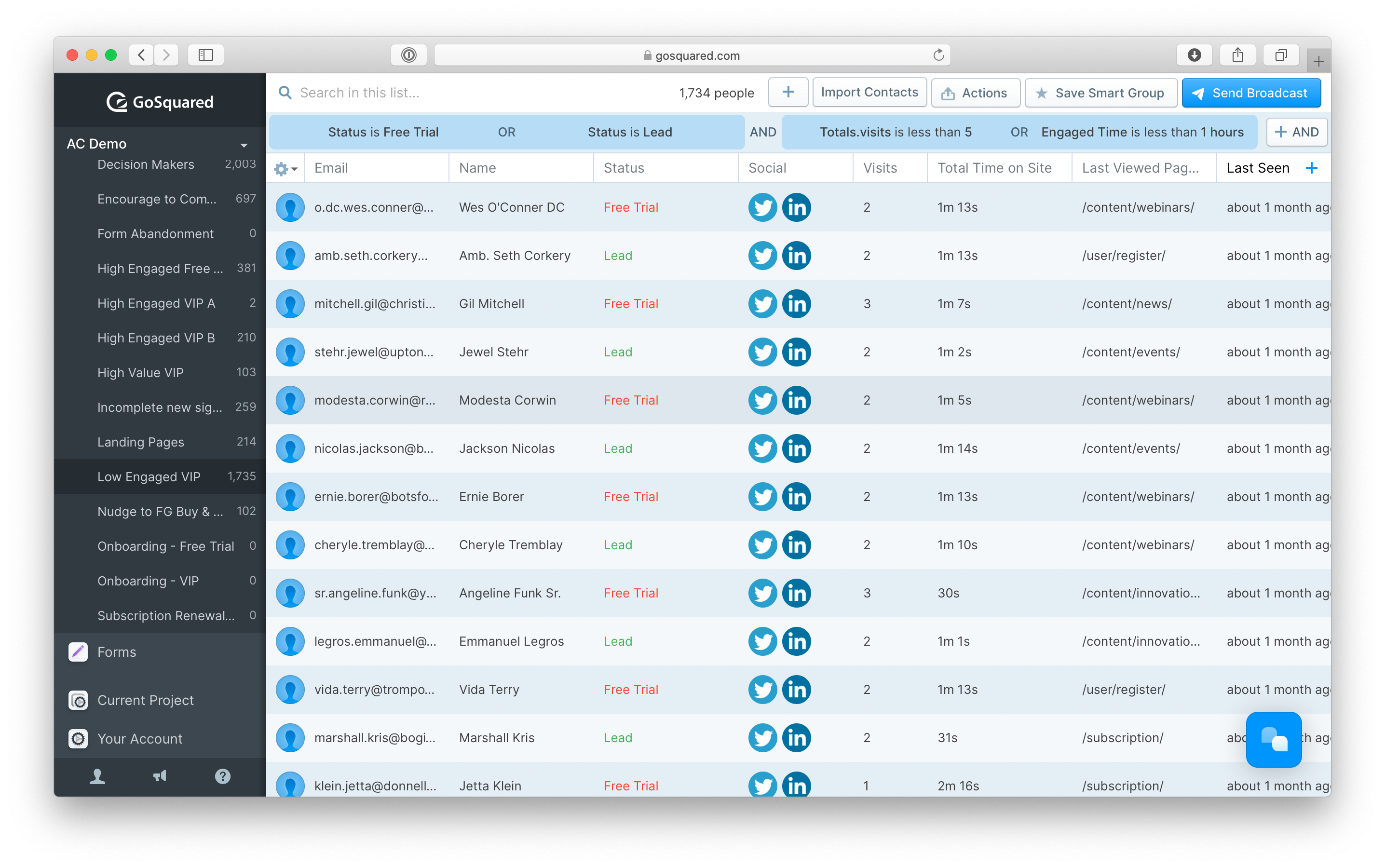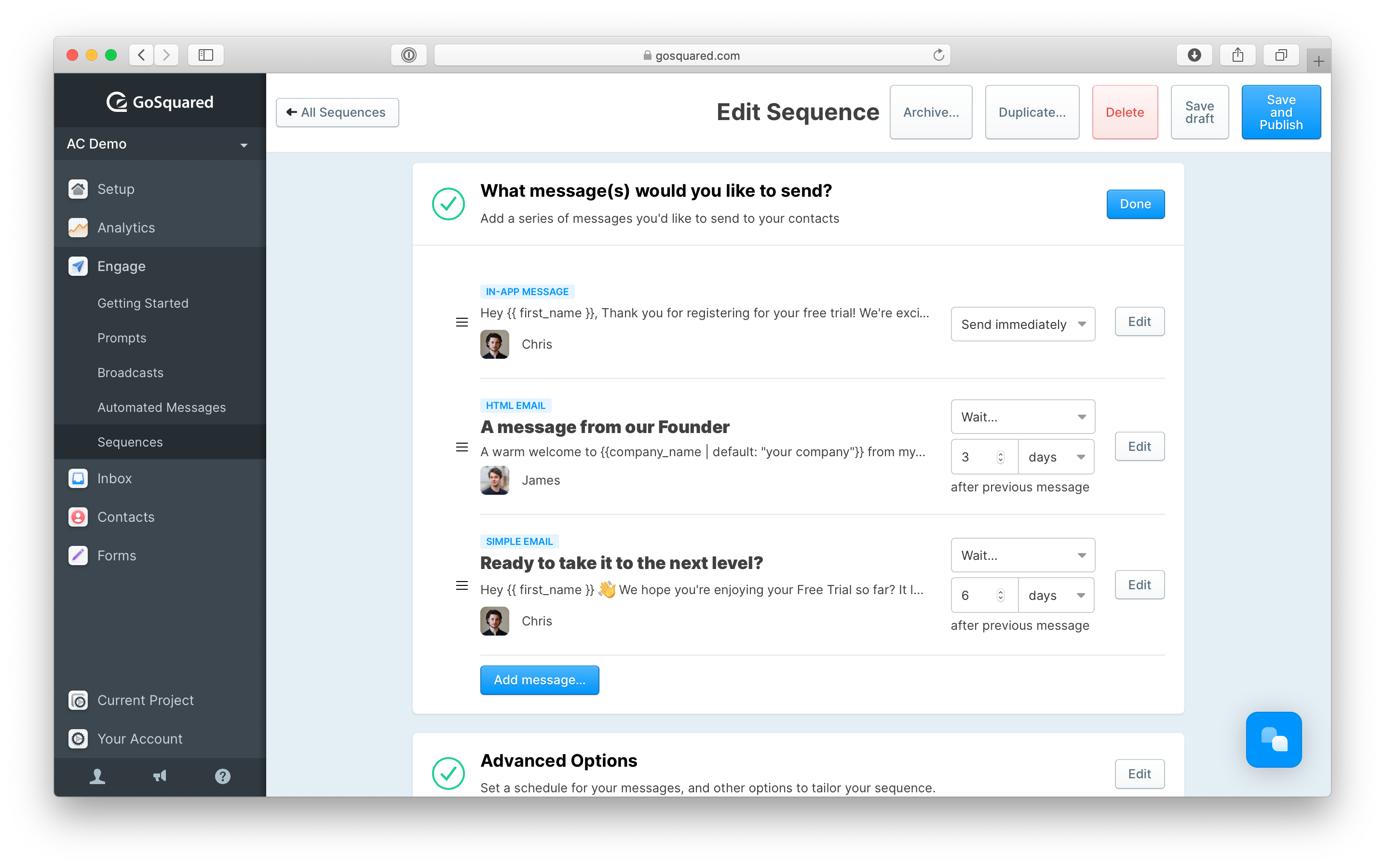
There’s nothing more frustrating than spending weeks crafting excellent copy, kitted out with a juicy CTA and your latest, hard-earned testimonial – only to see your email campaign scattergun all over the place.
Soft bounces, transient bounces, hard bounces, spam blocks, the dreaded “silent discard” (we’ll get to that one later)… These are all lead balloons to your email marketing ROI.
If Email Deliverability was a time & place, it would be the Wild Wild West.
There are no hard & fast rules nor much consistency across email providers, so ensuring your emails deliver currently remains more art than science.
That said, even if you can never guarantee full email deliverability, there are a few proven techniques to stack the odds in your favour.
And stack the odds we must. For nothing good ever came from an email which missed its target.
So join us, as we dive into GoSquared’s best-practise tips for increasing your email deliverability.

Why don’t some of my emails deliver?
Bounces 🛑
First of all, there are 3 different types of bounce. Some are message dependent, such as “attachment too large” – typically a Soft Bounce. Some are marked as Transient Bounce, such as “mailbox full”.
Your ESP will attempt to resend the email according to their own schedule and determined number of times. An example might be 6 attempts over the consecutive 3 days.
You could also hit Hard Bounces if your recipient’s email address no longer exists. Or your sending IP may have a low reputation, meaning the Internet Service Provider (ISP) decided not to allow the email to deliver.
It’s also worth noting that the level of information you receive on Bounces will often vary according to the recipients’ inbox email providers.
To add further confusion, ESPs often treat bounces differently.
Some soft bounces may get automatically retried. Others may temporarily block a particular recipient address. Some hard bounces may trigger an address to be permanently removed from your list – all of which is highly dependent on the sending provider you use.
“Silently Discarded” 😱
This category is one of the reasons why Email Deliverability is such a Wild West.
Silent discard is essentially when an ISP blocks receipt of an email, but without marking the reason for doing so, nor hard-bouncing the email.
This is a double-whammy; these emails don’t get delivered, but without giving you any visibility or insight into the reason why.
Some email platforms are a bit more notorious than others for silently discarding emails, Ycombinator forum has a helpful thread on this here. (NB. This is an external, public forum – the language at times in the comments can be a little… spicy.)
Spam Complaints 🙅♀️
Having your emails marked as Spam isn’t just a case of compromising a Marketing campaign or two. Poor email deliverability can lead to your emails getting outright banned.
Email Service Providers (ie. the back-end platforms that actually send out your emails) are unforgiving. Anything as seemingly inoffensive as a Spam Complaint rate of 0.5%, and your ESP could decide to boot your company permanently off of their services.
You read that right.
That means not only your Marketing campaigns out the window, but all emails set-up on that platform go too. Welcome emails, subscription update reminders, payment confirmations…
So this is a serious matter.
Following best practices – The DON’TS ❌

I shouldn’t think I need to stress why high email deliverability rates are important, dear reader. As a Marketing professional, I know I’m preaching to the choir.
But just in case the point needed reiterating.
The finest copy, meticulous re-writes, sparkling landing pages, intricate Sales funnels, and (most of all) Marketing budget; all get tanked if your emails do not land in your recipients’ inboxes.
As with most things, the first port of call for finding a solution tends to be the “do not do’s”. So let’s take a dive into these first.
1) Avoid Email Marketing dark arts 🧙♂️
Although this is becoming less & less common, some Marketeers still fall back on buying email lists, or worse, scraping sites for email addresses.
The former is well, just a terrible idea. Purchased lists are almost always chock full of low quality email addresses, meaning you’re targeting users who are unlikely to fit your ICP or be interested in your service. So targeting them makes little sense.
Worse still, because these users won’t know who you are, that makes them all the more likely to mark your emails as Spam; damaging your email reputation and future deliverability rates.
As for email scraping, this strategy is riddled with spam traps, not to mention outright illegal in many countries. Enough said.
2) DON’T WRITE COPY LIKE THIS!!!!?!
Guess what happens to spammy copy? It ends up exactly where it belongs… in the spam folder.
Gone are the days of dodgy direct marketing tactics, today’s ESPs are primed to filter out suspicious looking content. Excessive use of caps-lock and exclamation points is guaranteed to set alarm bells ringing.
At best you’ll get ignored, at worst you’ll see spam complaints sent from your recipients to your Email Service Provider. And, as we’ve said before, ESPs are not forgiving.
3) Avoid those trigger words 🤢
Similar to the above, ESPs are always on the look-out for ‘trigger words’ and sensitive to anything which seems remotely suspicious.
Remember the last super-spam-email you received? Chances are it included one of more of the following:
- Free!
- Act now!
- Results guaranteed!
- Check inside – offer expiring!
- You’re a winner!
You may well have crafted eloquent, non-spammy copy for your emails. But you might innocently have included a similar phrase somewhere to one of the above.
So do check over your emails with a fine-tooth comb before sending out, just to make sure any trigger words didn’t slip through the net.
4) Don’t send long or heavy messages 😮💨
You may have a great product, and you want to tell people as much about it as possible. But avoid the temptation of sending out lengthy emails full to the brim with attachments, images, or PDFs.
- Instead of blasting out all the information about your entire platform in one email, why not drip-feed a Sequence through to your users over the period of a week? Not only will this increase your email deliverability, but it also gives your audience a chance to digest all your content at their own pace.
- For images, keep in mind that too many large images causing long email loading times. This can trigger ESPs to recognise your messaging as spam.
- Rather than attaching that white-paper PDF, upload it to your site then add a link as a CTA within the email copy. That’ll decrease email load time and increase deliverability rates.
- Be careful with embedding video. A lot of email clients will block video embeds by default. Instead, add a play button in-front of an image for recipients to click. This can then take them through to a separate page hosting your video online.
5) Don’t be generic 🙄
Addressing your users with generic terms, such as ‘Hi friend’, falls into the trigger word category too. Plus, you don’t want to give the reader the impression they’re just one of a million users receiving the same email blast-out…
Instead, use Variables to address your readers by name. Ideally, you should have your email platform connected to a solid database of users, so sourcing relevant information shouldn’t be difficult.
Better yet, go a step further. See if you can add references to the users’ specific industry, or perhaps even company name. This is the key to sending email with a personal touch, at scale; as well as safeguarding deliverability and engagement.
Following best practises – The DO’S ✅
1) It’s all about active subscribers, not total subscribers 💡
If you’ve been maintaining an email list for a long-time, chances are some of those email addresses might now be outdated. It doesn’t matter that you signed them up legitimately via double-optin, if that email address is now expired your emails will be getting hard bounces each time.
You need to be tidying your email list on a regular basis. Ensure only active subscribers are receiving your messaging, in order to retain your email reputation.
Noticed that a segment of your list haven’t opened an email for months? Seeing the same email address bouncing from your last couple of campaigns? Get them out of the list asap!
2) Prune your list for ‘grey’ users 👀
Graymail is another phenomenon of email deliverability. Oftentimes, users may stumble across your site with a vague interest to learn a bit more, and sign-up to your newsletter. But over time, their interest fades or their focus changes, yet they still continue to receive your emails.
But emailing this segment is neither good for your email reputation, nor for your Marketing ROI. They’re no longer interested in receiving your communication, they just never got round to unsubscribing.
They’re either ignoring each email you send or worse, your messages are just filling up their spam folder.
This is why it’s so important to monitor user analytics closely. If you notice that a section of your list hasn’t returned to your site for months, or never signed-up for a trial, it’s likely your messaging is falling on fallow ground.
Don’t treat these users like active users; see if you can re-engage them first. Try to entice them back to the site with a time-limited offer, for example.
If that fails, consider sending a “Permission Pass” email. This will ask if users wish to continue to receive your communications – if they do, you can consider them as active and continue to message them. If they do not confirm, then best to remove them from the list to keep your deliverability high and engagement metrics healthy.
3) Send your emails from a person, not your company 🙋♀️
No one likes receiving an email from a ‘do not reply’ address.
Sending your users an email from a no reply or generic address is like approaching a stranger at a cocktail party, talking at them for five minutes, then walking away as soon as they try to get a word in.
Your emails should be engaging your users. And that’s a two-way street.
You want to offer your recipients the chance to reply and interact with you at every possible turn. Including your email sends.
So get rid of the no replies or contact@’s and send your emails from a real human. You’ll increase your open rates, increase user-engagement, and it’ll be a boon to your email reputation.
4) ESPs prefer regularity 📊
If you can, try to stick to a regular sending schedule. ESPs are sensitive to spikey or erratic sending behaviour, as this mimics typical spam activity.
Instead, try to retain a regular cadence of sending out your communications.
If you have a Weekly newsletter, aim to send it at the same day & time each week. Not only will your email deliverability thank you, but clients will get habituated to receiving it at that moment. Meaning they are more likely to be ready to open and read it.
Every industry differs on best sending times, so run a few experiments and dig into the click metrics to find which timing works best for you.
5) Deploy double opt-in 📤
We sometimes get push-back on this suggestion. Perhaps you yourself are thinking, ‘But Chris, if I add double opt-in won’t that create friction in my sign-up process? I don’t want to miss out on users signing up to my newsletter!’
It’s a valid point. But here’s the thing, if a user can’t be bothered to click one confirmation email to subscribe to your content, how serious really are they about your business?
Chances are, they’re the kind of reader who’d end up not engaging with your content anyway. That means they’ll probably end up in your Graymail list.
So, although adding double opt-in could marginally decrease your number of total subscribers, I’ll bring you back to point one of this section. You shouldn’t care about total subscribers, you should care about active subscribers.
You want to filter for users who are actually going to open your emails, read your content, and engage with your platform. Double opt-in is a good system to filter out the time-wasters.
6) Send targeted, personalised messaging, at scale 🎯
We’ll end our guide here on the big one.
Email Marketing has evolved over the past years.
Gone are the days of loading up thousands of users into an email-blaster, and rocketing out the same generic email across the board.
Today’s user is much more sophisticated, and requires more sophisticated outreach from you.
One of the best ways to ensure good email deliverability is to ditch the email-blasts and swap-in highly segmented, targeted messaging.
Don’t send the same message to everyone, filter your users according to:
- Who they are?
- How they are engaging with your platform?
For the former, great examples are grouping users according to Company Position or Company Size. After all, the comms you send to the CEO of a startup should be very different to the comms to a Product Manager at a large organisation.
In addition to user characteristics, you want to meet your users where they are in the journey with your product. This increases the likelihood of users engaging with your messaging consistently, because it will be relevant to them.
Got a cohort of users in their first week with your platform? Set up an automated onboarding sequence.
Another segment of Enterprise accounts creeping close to their renewal dates? Email over a summary of their past year using your product; reiterate the value they have received, and set them up for a successful renewal.
What does all that mean over time? Good open rates, low spam complaints, and good email reputation ✅
Thanks for reading!

Congratulations, you made it all the way to the end of the guide! 🎉
I know that was a lot of information to absorb, but this is important information and well worth implementing into your email strategies. Good email deliverability is not easy to achieve, but getting there is well worth the struggle. The ROI of your Marketing campaigns depends on it.
Want to know how GoSquared Engage can help you send best-in-class email? Check out our website or get in touch with the team for a demo here.





